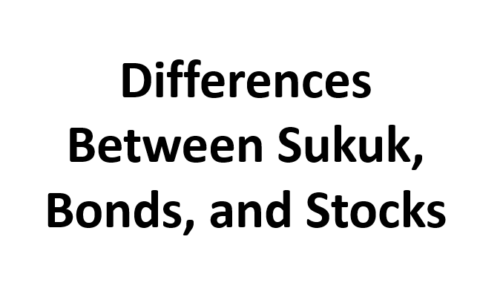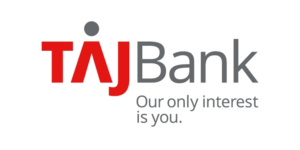What is a sukuk?
A sukuk is an Islamic financial certificate, similar to a bond in Western finance, that complies with Islamic religious law (Sharia). Unlike traditional Western interest-paying bonds, sukuk involves the issuer selling a certificate to an investor group, using the proceeds to purchase an asset in which the investors have direct partial ownership interest. The issuer also commits to repurchasing the bond at its par value in the future.
Definition of Sukuk
The official definition of Sukuk provided by AAOIFI in this standard is; “Sukuk are certificates of equal value representing undivided ownership in tangible assets, usufructs, and services or (in the ownership of) the assets of particular projects or special investment activity.”

What does sukuk mean in Arabic?
The term “sukuk” in Arabic (صكوك) refers to Islamic financial instruments that are commonly known as “Islamic bonds” or “sharia-compliant bonds” in English. Sukuk (singular: sukuk) are financial certificates or instruments that represent ownership in an underlying asset or a project. Unlike conventional bonds, which typically pay interest, sukuk adhere to Islamic principles that prohibit the payment or receipt of interest (riba).
Sukuk are structured in a way that allows investors to earn returns from the underlying assets or activities. The issuer of sukuk typically raises capital by selling these certificates to investors. The proceeds from the sukuk issuance are then used for a specific project or investment, and investors receive periodic payments based on the profits generated by that project.
Sukuk structures can vary, but they often involve the following principles:
- Asset-Backed: Sukuk are usually backed by tangible assets, such as real estate, infrastructure, or a specific business project.
- Risk-Sharing: Investors and issuers share both the risks and rewards of the underlying asset or project.
- No Interest: Sukuk do not involve the payment or receipt of interest (riba).
- Transparency: The issuer must provide investors with clear information about the underlying assets and how profits and returns will be distributed.
Sukuk have become an important tool in Islamic finance for raising capital and financing various projects while adhering to Sharia principles. They have gained popularity in both Islamic and non-Islamic financial markets as a means of attracting investments from a broader range of investors.
Why were sukuk created, and how do they enable investors to work around Islamic prohibitions?
Sukuk were created to comply with Islamic law, which prohibits “riba” or interest. Traditional Western debt instruments are not considered permissible in Islamic finance. Sukuk were designed to link the returns and cash flows of debt financing to a specific asset being purchased, effectively distributing the benefits of that asset. This structure allows investors to circumvent the prohibition outlined in Sharia and still receive the benefits of debt financing. However, sukuk can only be raised for identifiable assets, ensuring a direct link between the investment and the underlying asset.
How do sukuk bonds work?
- Issuance: The process begins with an entity, such as a government, corporation, or financial institution (the issuer), seeking to raise funds for a specific project or purpose. The issuer decides to issue sukuk as a means of raising this capital.
- Structuring: The issuer works with Islamic financial advisors and experts to structure the sukuk in a manner that complies with Sharia principles. This involves determining the underlying assets or activities that will generate returns for sukukholders, as well as the profit-sharing and risk-sharing arrangements.
- Documentation: Legal documentation is prepared to outline the terms and conditions of the sukuk issuance. This documentation includes the sukuk prospectus, the trust deed (which establishes the trust that holds the underlying assets), and other agreements that govern the sukuk transaction.
- Rating: Credit rating agencies may assess the creditworthiness of the sukuk issuer and assign a rating to the sukuk. This rating can influence investor interest and pricing.
- Subscription: The sukuk are offered to investors through a subscription process. Investors, including individuals, institutions, and funds, subscribe to the sukuk by purchasing the certificates. The issuer receives the funds raised from the sukuk sale.
- Listing: In some cases, the sukuk may be listed on a stock exchange or traded on the secondary market, making them tradable securities. This provides liquidity to investors who wish to buy or sell their sukuk holdings.
- Distribution of Returns: The returns on sukuk are generated from the profits of the underlying assets or activities. These returns are typically distributed to sukukholders on a periodic basis, often quarterly or semi-annually. The distribution is based on the profit-sharing agreement outlined in the sukuk documentation.
- Maturity and Redemption: Sukuk have a specified maturity date, at which point the issuer repays the face value of the sukuk to the investors. This is typically done through the sale of the underlying assets or through the funds generated by the underlying project.
- Secondary Market Trading: Investors who wish to sell their sukuk holdings before maturity can do so on the secondary market, where the sukuk may be traded among investors.
When did sukuk become popular, and where were they first issued?
Sukuk became extremely popular around the year 2000 when the first such products were issued in Malaysia. Bahrain also followed suit in 2001. Since then, sukuk have been used globally by Islamic corporations and state-run organizations, gaining an increasing share of the global fixed-income market.
Difference between sukuk and traditional Western bonds
The main difference is that “صك” (Sukuk) is compliant with Islamic Sharia, and its holder is considered a partner, while the holder of a “سند” (bond) is considered a creditor.
So, “صك” is a financial instrument issued by a company for a specific period with a specified maturity date to obtain a loan.
The partner receives a specific percentage during the Sukuk’s tenure, and after the period expires, they receive the amount they invested in the company or project.
Thus the key difference between sukuk and traditional Western bonds is the nature of ownership and returns. Sukuk involve direct ownership interest in an asset, whereas Western bonds represent indirect interest-bearing debt obligations. Sukuk holders do not own a debt obligation owed by the issuer but instead own a portion of a specific asset linked to the investment. This means that sukuk holders receive a share of the earnings generated by the associated asset.
Now that we understand what financial Sukuk are, you might naturally have the following questions: What are the types of Sukuk? What are the different insurances? What are the key differences between Sukuk, bonds, and stocks? And what are their uses? Let us discuss them
Types of Sukuk

There are four main types of financial Sukuk, as follows:
- Mudaraba Sukuk: These Sukuk are issued based on a Mudaraba contract, where the investment amount is used to finance a specific project or existing economic activity. The Sukuk represents a share in the ownership of the Mudaraba assets, and profits generated by the project are distributed according to pre-agreed ratios in the contract. After a specified period, the Sukuk’s value is returned to its holder. This type of Sukuk is tradable.
- Murabaha Sukuk: These Sukuk are issued based on a Murabaha contract, where the investment is used to purchase goods and then sell them to the buyer. The Sukuk represents a share for the investor in the ownership of the goods before and after their purchase and in the price of the goods after their sale to the buyer. The return on this type of Sukuk is the difference between the purchase and sale prices. These Sukuk are not tradable.
- Musharaka Sukuk: These Sukuk are issued based on a Musharaka contract, and the proceeds from the Sukuk are used for two main purposes: either to finance a completely new project or an already established standalone project, and sometimes for participation in profits.
- Ijara Sukuk: These Sukuk are structured based on an Ijara (leasing) contract. The proceeds from these Sukuk are used to lease specific assets or services with the goal of eventually owning them. The income generated from these Sukuk is used to purchase the targeted assets or services for leasing to others, and the investor holds a share in the ownership of the purchased assets or provided services. Like Murabaha Sukuk, the return here is the difference between the purchase price and the sale price of the assets or services. These Sukuk are tradable.
- Salam Sukuk: In the salam structure of Sukuk, the issuer takes advance payments at full price with the promise of purchasing the asset on a future date. Later, the purchased asset is sold at a cost-plus profit margin, and the proceeds are distributed to the holder at a specified date.
- Wakala Sukuk: The Wakala Sukuk structure involves hiring another party to act on the investor’s behalf. An investor usually appoints an agent (wakeel) so that they can lend their expertise for investing funds strategically. The agent works to manage the investments for a specific time period and delivers profits. In turn, the investor has to pay a specific fee to the agent for their efforts.
- Istisna Sukuk: The Istisna Sukuk is also referred to as Islamic project bonds and is issued to manufacture and fund a specific project or asset. The issuer has to use their own material and deliver the complete asset on a specific date. This Sukuk structure is usually used to fund real estate projects and large-scale constructions such as power plants, roads, and more.
What are the types of Sukuk issuances??
Sukuk are issued in two main phases, with no third party involved:
- Public Issuance: In this case, Sukuk are offered to a group of individuals or entities, whether they are natural or legal persons. The key here is that they are not pre-determined.
- Private Issuance: Similar to public issuance, private issuance is also offered to a group of individuals who possess the necessary capital and have established entities, and these participants are pre-determined.
Key Differences Between Sukuk, Bonds, and Stocks

As previously defined, Sukuk and bonds are essentially the same, with the only difference being that Sukuk comply with Islamic Sharia, while bonds are the traditional, older form of financial instruments. However, stocks are quite distinct from both. Let’s explore the key differences:
- When a company issues shares, it is selling a portion of its ownership for cash. In contrast, issuing Sukuk or bonds is a way to borrow money by issuing securities and ensuring the repayment of loans at maturity.
- The company itself issues shares, whereas Sukuk or bond issuance can be carried out by both companies and government entities.
- The return on Sukuk and bonds is relatively lower compared to the return on stocks, which is typically higher.
- Sukuk and bondholders receive periodic returns with the guarantee of the return of their invested capital at the specified maturity date, while stockholders receive a portion of profits without the guarantee of capital return.
- In the event of a company’s bankruptcy, holders of Sukuk and bonds have priority in recovering their invested capital over shareholders.
These are the fundamental differences between Sukuk, bonds, and stocks.
What are the uses of Sukuk and Bonds?
To understand the fundamental uses of both Sukuk and bonds, we need to consider them from two perspectives:
- The Issuer (Borrowing Entity): The primary purpose of the issuing entity for issuing financial Sukuk or bonds is either to increase its capital or to develop its operational processes.
- The Investor (Sukuk or Bond Holder): For the investor, they lend their money to receive an additional source of income in the form of periodic profits based on the specified contractual period. Investors also diversify their investment portfolios by adding Sukuk and bonds alongside other securities.
What distinguishes Sukuk from other investment instruments?
Sukuk possess a set of unique characteristics that differentiate them from other investment instruments like bonds and stocks. Some of the distinguishing features of Sukuk include:
- They are structured in accordance with Islamic Sharia principles, based on profit and loss sharing.
- The issuance and trading of Sukuk adhere to Sharia-compliant guidelines without any dispute.
- The quantity of Sukuk is determined based on their face value, not on the number of units.
- The price of Sukuk is calculated as a percentage of their face value.
- The return on Sukuk is calculated from the market price at the time of purchase until the maturity date.
- They have an annual coupon rate, which is simply the percentage of the Sukuk’s value paid periodically over a year by the issuer.
Advantages of Sukuk Investments
Investing in Sukuk, Islamic bonds structured to comply with Shariah principles, offers a range of advantages, making them an attractive option for both corporations and governments. Here are some key benefits associated with Sukuk investments:
- Attracting Direct Foreign Investment (DFI): Sukuk can serve as a means to attract Direct Foreign Investment (DFI). By issuing Sukuk, corporations and governments can tap into international markets and draw foreign investment, fostering economic growth.
- Accessible and Profitable for All Investors: Sukuk provides a viable investment avenue for both Muslim and non-Muslim investors. With reasonably priced and stable returns, they offer an inclusive investment opportunity that appeals to a diverse range of investors.
- Liquidity Management Tool: The tradeable nature of Sukuk makes them a valuable liquidity management tool. Investors, banks, and financial institutions can utilize Sukuk to liquidate assets and enhance market liquidity, contributing to a more efficient financial environment.
- Economic Development and Stability: Sukuk are designed to link investment activity with existing economic activities. This alignment promotes economic development and financial stability by ensuring that real economic assets back the investment, fostering sustainable growth.
- Low-Cost Financing: Sukuk financing does not involve conventional debt-based structures, making it a relatively low-cost financing instrument. Additionally, Sukuk carry minimum default risk, enhancing their appeal to investors seeking security.
- Job Creation: When Sukuk are issued to fund specific projects, they can generate employment opportunities. This alignment with productive ventures can lead to job creation, contributing to economic prosperity.
Disadvantages of Sukuk Investments
Sukuk, often hailed as a relatively low-risk investment option, can still come with certain disadvantages that investors should be aware of. While these disadvantages are not pervasive, they merit consideration:
- Interest Rate Sensitivity: Sukuk investments can indirectly be influenced by fluctuations in interest rates. When market interest rates rise, the value of Sukuk may decrease, affecting the investment’s profitability.
- Shariah Compliance: Some issuers may not fully adhere to Shariah principles when issuing Sukuk. This oversight can potentially lead to the loss of assets, raising ethical concerns for investors.
- Liquidity Challenges: Sukuk investments are typically held until they mature, which can result in a delay in accessing invested capital. Investors seeking immediate liquidity might find this aspect less favorable.
- Market and Exchange Rate Volatility: Unfavorable shifts in market conditions and exchange rates can impact the value of Sukuk assets, potentially leading to a decrease in the investment’s worth.
- Asset Value Vulnerability: Unforeseen damages or losses to underlying assets can diminish the value of Sukuk investments, presenting an inherent risk.
- Default Risk: Although relatively low, there remains a risk of default in Sukuk investments. Issuers may experience delays in payments, or in extreme cases, the assets could become irrecoverable.
- SPV (Special Purpose Vehicle) Challenges: In some cases, the SPV responsible for managing Sukuk assets may face difficulties in reimbursing investors. Additionally, the SPV may encounter challenges in disposing of assets after the contract’s conclusion.
Who can benefit from financing through Sukuk issuance?
To avoid any legal pitfalls, it’s important to note that there is a specific set of entities that have the right to benefit from financing through Sukuk issuance, including:
- Joint-stock companies subject to the Companies Law.
- Shareholding companies.
- Limited liability companies.
- Sole proprietorships established in accordance with Law No. 159 of 1981.
- Banks whose bylaws permit it.
- Public entities.
- Individual investors.
Follow us in Facebook for more recent updates
Discover more from Islam Hashtag
Subscribe to get the latest posts sent to your email.




